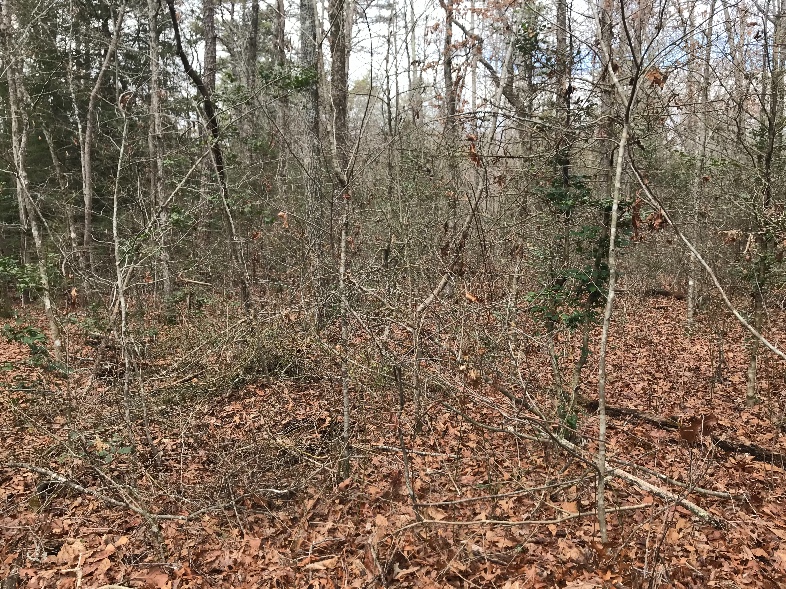Where Not to Build

Somebody wise once said, “If you discover a beautiful, magical place — don’t build there.”
It’s tempting to select the most captivating spot on a property as cabin-central. But if there’s a place that truly grabs your spirit, that’s probably because it’s an old, or undisturbed, or ecologically unique place. These are the kind of spaces that should be left well enough alone. Put up a few camp chairs, and maybe a small fire pit, and call it a day, because turning this magical area into a construction zone risks wringing the magic right out of it.
For me, this magical spot was a patch of old-growth forest along the creek, with an old moonshine still and some huge hemlocks, some over 350 years old. The reason this place was left undisturbed for so many centuries is that hemlocks make terrible lumber — their wood splinters and bows over time. A lack of interest in this “junk” wood has meant that this watershed has been left relatively undisturbed, despite the flurry of logging that occurred just a hundred yards away.
Down here hemlocks tower overhead, and Escherian tangles of mountain laurel dominate the understory. Foxes are residents and otters are visitors. One time we accidentally overturned a small log, and were shocked to see five Cumberland Plateau salamanders resting underneath. This isn’t a place for saws and shovels. For a realm that managed to evade the ravages of the construction industry for centuries, it would be a shame to barge in with it now.
Where to Build

Choosing a site is a balancing act of three factors: what’s good for you, what’s good for the land, and what’s good for the cabin.
You might be fond of a particularly neat view, or some impressive flora nearby, and be tempted to say, “Here’s the spot!” Fair enough, but is that view achieved thanks to a steep embankment? If so, it will be very hard to keep your cabin stable (or even build it in the first place). Is that lovely flora going to have its soil compacted, or have to be cut back, to accommodate your cabin? That doesn’t seem like a good way to demonstrate your appreciation of nature’s majesty.
So ideally, you’ll want a spot that’s relatively flat, in an area that has previously been disturbed. If you can avoid removing any mature trees, all the better. The benefit of building a small cabin is that you’re likely to be able to find a spot to shoehorn it into. Be sure to take some time and wander around. In winter, you can look for places where it looks like there are gaps between large trunks. In summer, look for holes in the canopy.
Why

Spending time in a forest has exceeded all my expectations about how beautiful, ruthless, complicated, and diverse an ecosystem can be. You might think that you have zero interest in lichen, but when you start seeing dozens of species of lichen — some with eerie lily pad appendages, some that make black raccoon-tail stripes up tree trunks, some wearing little neon-red caps — it’s hard not to be confronted by what a strange and rich world we live in. (And that’s without getting into the fact that lichen isn’t even an individual organism, but rather a three-way symbiosis.)
The worst thing we can do in a place like this is to think we know better. No cabin can be more visually compelling or valuable than the forest itself, and the humbleness of its construction should reflect that. A cabin’s value lies in the fact that it’s a portal through which we can commune with this place, and share its value with others, to instill the importance of protecting wild spaces. The hemlocks and the foxes were here long before us, and they will be here long after. We should behave with the courtesy of people who are in someone else’s home — because ultimately, we’re just guests here.